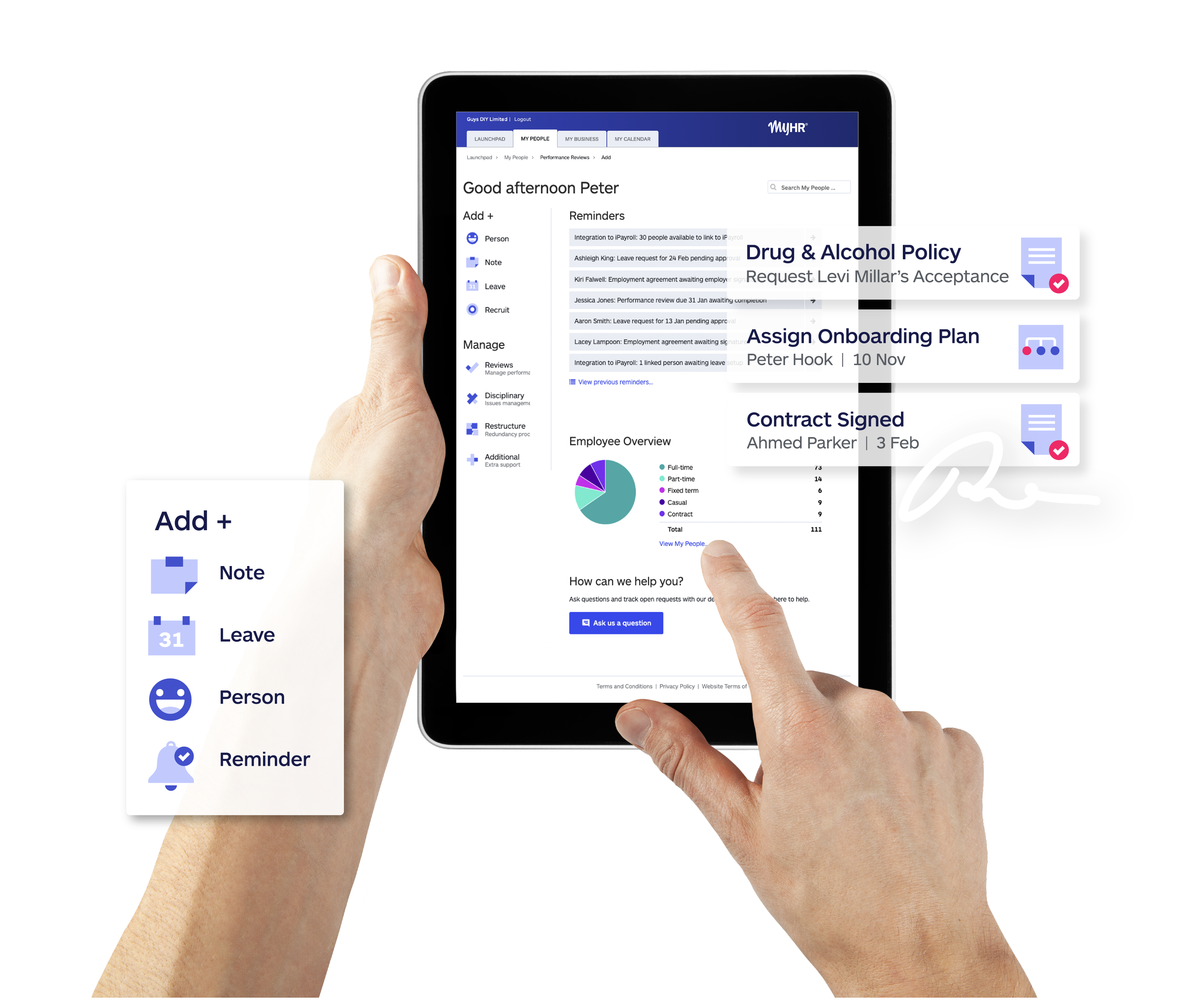Good performance reviews work. What’s more, they can help businesses of all sizes achieve results.

In recent years, there has been a lot of debate about the value of performance reviews (some people have even heralded the “death of the performance review”), but in my observation, these statements relate to performance review processes favored by many large organizations that have encumbered them with too much bureaucracy and rigidity.
Inflexible rules and deadlines, forced distribution curves, and crazy paperwork requirements have piled up to result in the corporate murder of the poor, old performance review.
But I’ll say it again: good performance reviews work!
Done well, performance reviews are an effective way to track your employees' progress, provide vital feedback, support employee development, and align each person's performance with your company goals, which helps the business achieve results.
Speaking from much experience (good and bad), here are some tips for Canadian businesses to get the most out of performance reviews and avoid common mistakes.
1. Deliver performance reviews to the right employees
Positions that have a genuine opportunity to deliver over-and-above results for the betterment of the organization and the individual should have performance reviews.
Positions characterized by routine work patterns that rarely change do not need formal reviews; performance management in these roles happens daily.
2. Focus on the conversation, not the forms
Good performance reviews are conversations, not reports.
While documentation provides a basic way to articulate expectations, track performance, and measure results, it should never replace actual dialogue with your people.
Remember, performance reviews are fundamentally about employee development, not ticking boxes. Use the opportunity to provide employees with meaningful feedback. Reinforce areas where they have excelled, and work with them to identify areas for improvement.
3. Keep performance reviews simple
Long and complicated forms with complex matrices and measures detract from the real conversation and encourage a focus on filling out forms. To streamline and improve your performance reviews, try this structure:
OKRs (objectives and key results)
- Quantifiable objectives that allow managers and employees to track progress and measure results:
- Identify high level OKRs that contribute to business success and align with the role in question.
- Example: increase market share in British Columbia by 20%.
- What the employee needs to do to be successful:
- No more than 5 items.
- Only identify items that are over and above the core role, nothing about “turning up on time”.
- These are “hard” measures, easy to articulate and measure.
Skills
- What skills the person needs to achieve the objectives:
- These are the softer measures that can sometimes be harder to rate.
- Linking them to the objectives makes them easier to measure.
Development plan
- Development activities you and the employee will complete:
- The activities will help improve skills, which will help achieve the objectives.
- And help with career development.
4. Get the review cycle timing right
This might be different for different roles within the organization. While most organizations will want to align the full review to an annual cycle, you should schedule regular check-ins throughout the year.
Remember to make sure the check-ins happen at meaningful times.
5. Leverage performance review software
Anybody who uses a paper-based performance review system today has lost their way. It’s the equivalent of writing a check to buy your groceries… even Grandma doesn’t do it anymore.
The many, many benefits of using performance review software over paper are too great to list… surely this argument is already won?
If you follow the basic steps outlined here, you should notice how your performance reviews start to encourage ongoing and two-way conversations about performance.
They will help you deliver better results, reward good people, and deal with any problems before they get massive.
Frequently asked questions about performance reviews
Should I get employee input on the design of the performance review?
Yes. Involving your employee in the design stage will make them feel like they have a say in the process, which will increase their buy-in.
They’ll be able to give you a good sense of whether the performance objectives are realistic and achievable, or if you’ve set the bar too high (or low).
Ultimately, however, it’s your decision what the objectives are.
What to say in a performance review?
Performance reviews are most effective when they work as two-way conversations between the employer or manager and the employee. The trick is covering the formal parts of the review process while leaving plenty of space for discussion and feedback.
If you track performance in real-time (hint: software is your friend here) and check in regularly with the employee, it’s much easier to create an atmosphere where both parties can be open about how things are going, what’s working and what could be improved. There’s also much less chance for surprises come review time.
Should I use AI to generate a performance review?
Artificial intelligence tools provide real opportunities to streamline the performance review process, especially when you are creating the review.
It’s important to be aware that large language models like ChatGPT generate responses from large datasets, so we recommend using AI as a starting point that you then tailor specifically to the needs of the role and your organisation.
Human input is key. MyHR makes designing and executing performance reviews a breeze, with a library of review templates, AI-generated drafts, and an expert team of HR professionals ready to ensure your review structure and implementation are exactly what you need.
How many OKRs should I put in a performance review?
We recommend a maximum of 4-6 objectives for each performance period.
Including more than 6 OKRs than this makes the process overly complicated and time-consuming, which lessens its effectiveness.
Are performance reviews confidential?
Broadly speaking, yes. The protection of an individual’s information is important, especially for upholding and maintaining the principle of good faith in the employment relationship.
However, it’s common for performance reviews to be discussed and circulated at a management level, because good performance reviews reflect the goals of the whole company, and sharing the results (and development plans) helps ensure clear communication and alignment between teams or divisions.




